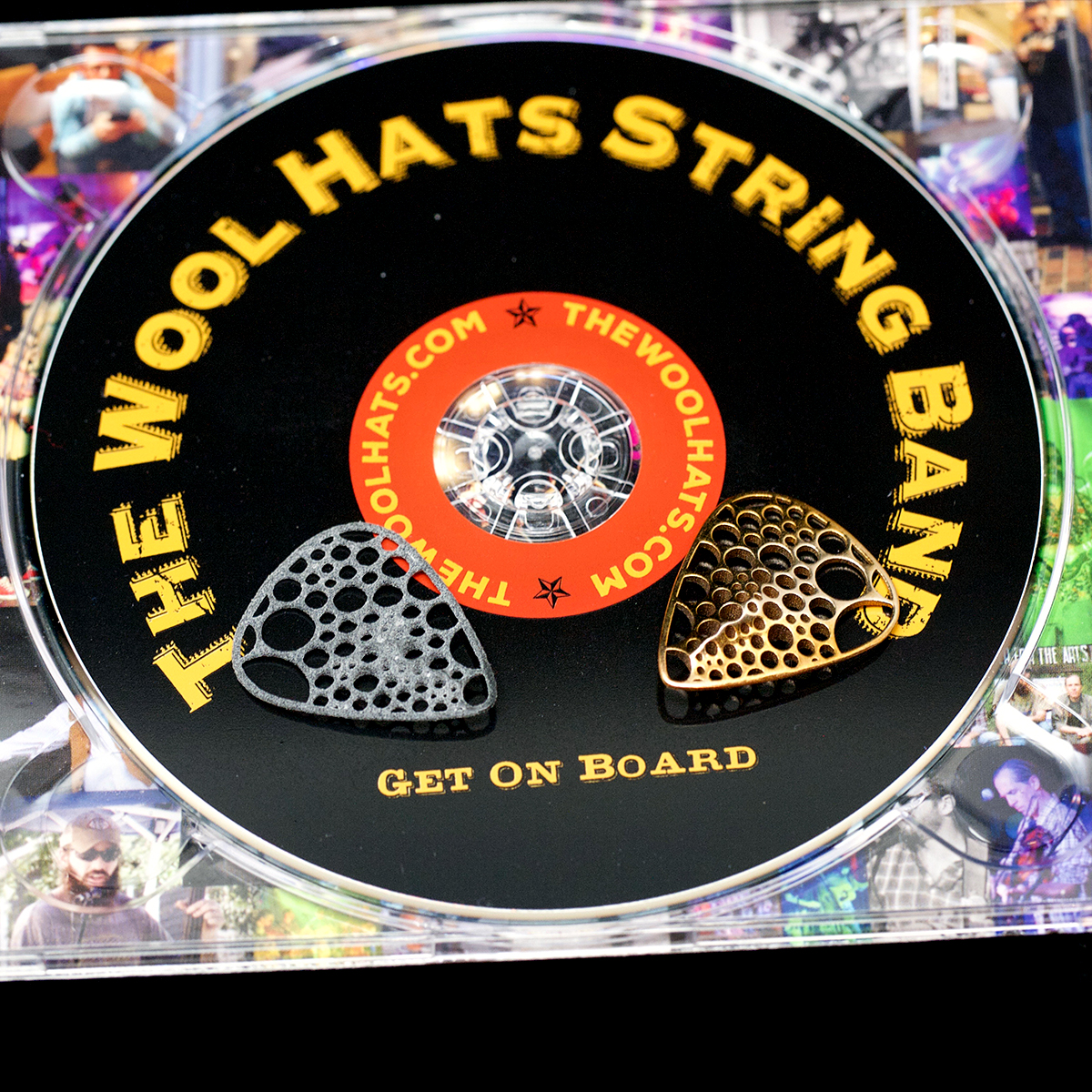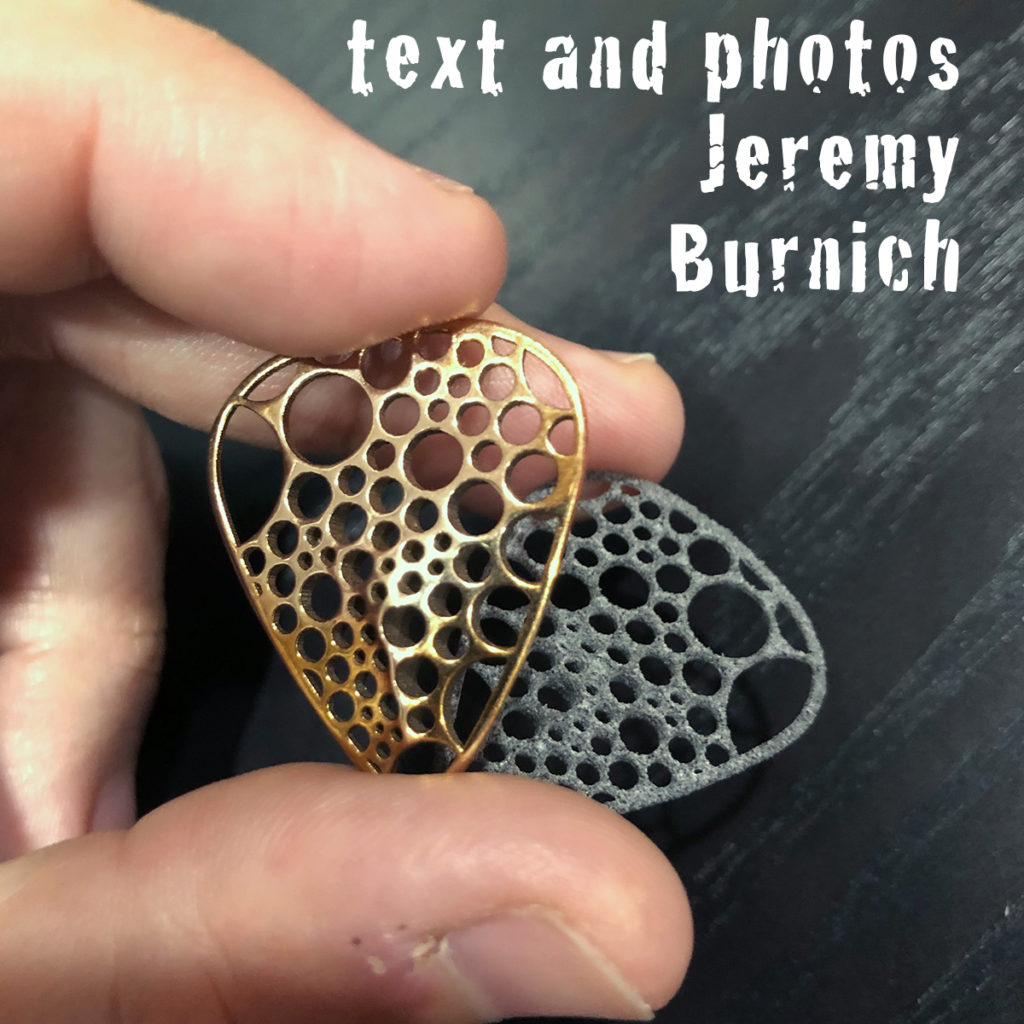

Sometime in November
I posted some photos of “The Most Unique Guitar Pick In The World,” and an old grade school buddy of mine, Ryan Mooney of The Wool Hats String Band - A Connecticut based bluegrass/jamgrass group - reached out to tell me that he thought they looked cool. I offered to send him some to test out, thinking it’d be nice to see how they work from the perspective of a real musician. I just strum a few chords here and there and fall in and out of practice with my guitar. If anyone could tell me if the picks played as good as they looked, an acoustic guitar player in a bluegrass band who put them through the paces definitely could.
“I’d be willing to give them a try and give you some feedback. I’m pretty picky about my picks (if that’s a pun, it was totally intended), but always enjoy trying something new.”
Ryan Mooney
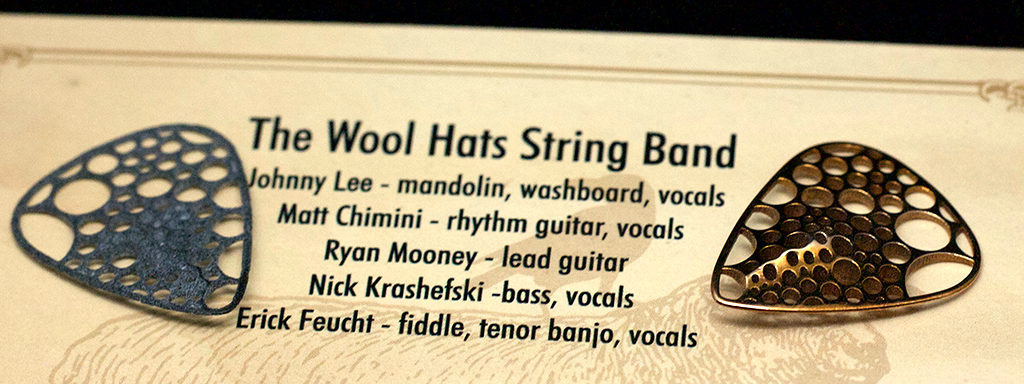
I sent him a bronze pick and one of the “pro-plastic” ones made on the fancy new HP Multi Jet Fusion 3D printer. I was especially interested in how the plastic pick would hold up since it’s a new type of plastic formulation I hadn’t worked with before. I was also interested to see if the bronze would come back all beat up and full of character.
When they arrived back both picks materially were in great shape. The bronze pick looked basically the same - oh well - and the pro-plastic was ever so slightly worn a bit smooth.
Now the most important bit. Sound-wise, the verdict was that there were pretty OK!
For a first experiment designing a pick that looked good and felt good, “OK,” was a good result. I was especially happy because I modeled the envelope of my pick after a standard Fender electric guitar pick! Ryan plays acoustic exclusively so, the strings are pretty unforgiving. To get an "OK" from an acoustic player using an electric biased pick isn’t too shabby.
"I use what many acoustic players consider the Cadillac of picks. It’s by a company called Blue Chip." According to Ryan, "the material hardly wears and produces a nice tone, but they come at $35 a pick." The pro-plastic pick is right along that price point (though I off two picks for that price).
The picks weren’t perfect but they were surprising in some ways. You can have a listen to some recordings he made using his Collings D1 guitar.
This first sample are the chords to a song he wrote for The Wool Hats. It’s called Old Silo.
This second sample is of Whiskey Before Breakfast similar to Norman Blake’s version.
Even my unpracticed ear can hear the variation in sound. With the bronze I think the strings sound more muted. But it’s interesting to be able to make out the pick rubbing up and down the grooves on the E and A strings. You can really hear texture from metal zipping along metal. And the pro-plastic pick sounds much livelier and very bright. But what about opinion of the actual musician?
Here’s what Ryan had to say:
Regarding feel: The thicker part in the middle is right where I normally grip it. It felt okay on the plastic one but was impacting my grip on the bronze one. For someone who holds a pick further back than I do, it may give some added control. The design with all the open circles does seem to enhance grip and might do well on a pick that is the same width throughout.
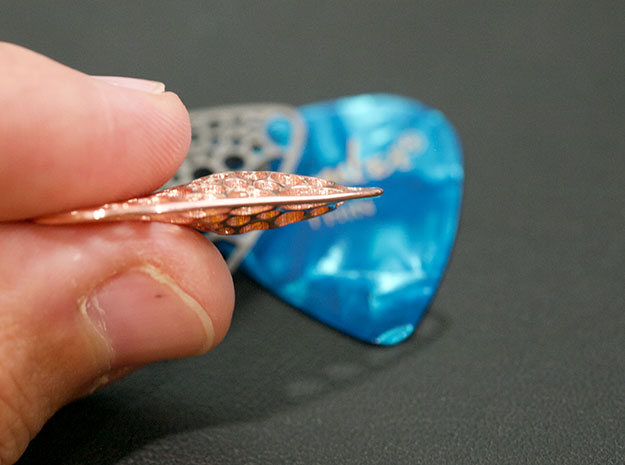
Regarding tone: The plastic pick is definitely quite a bit brighter than what I use now. That is probably in large part due to the thickness of the pick. I use a pretty heavy gauge (1.5 mm) so there’s not a lot of flex in it. Your plastic pick is similar to a light gauge pick so it gives quite a bit when it hits an acoustic string. But it does give a nice, bright sound. The bronze one has some similarities to the picks I use in that it feels like a heavier gauge pick. Being metal, it has virtually no give when it hits the string. Surprising to me, it’s tone isn’t that different than the pick I use, but there’s definitely an edge to the tone when it strikes the string that’s unique to the material.
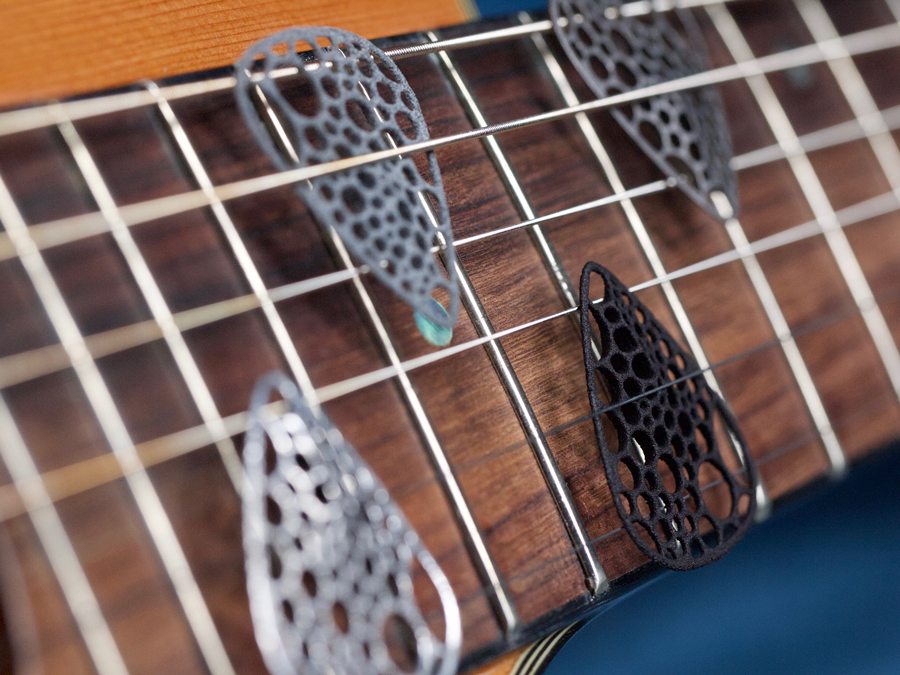
Regarding Flexibility: The main reason I focus on how much it flexes when it hits the string is around volume. I find when playing with a mandolin and fiddle who are both louder than a guitar, you want as much energy transferring to the string as possible for volume. A pick that flexes too much doesn’t transfer as much energy. But, that’s most definitely a personal preference that is influenced by what instruments you are playing with.
Why put this much thought into a guitar pick?
Ryan notes that the pick he uses now, by Blue Chip, “is quite a marvel. Whatever space age shit it’s made out of, it barely wares down. I’ve been using the same two for five or more years.”
Blue Chip has a reprinted article by Steven Stone that appeared in Vintage Guitar Magazine that goes over the natural versus synthetic pick debate. It seems the gold standard in many steel string acoustic guitar circles is the tone received (or perhaps perceived) using tortoise shell picks. But given the cruelty involved in acquiring them, an opportunity exists for pick makers to find a material that replicates that tone and feel made from a synthetic cruelty free source.
The new materials and the design possibilities only achievable via additive processes mean that there is ample opportunity for innovation in designing a pick that looks great, feels great, lasts a long time and doesn’t involve killing an animal to produce.
For that reason, and because the picks look so darn cool is why we’re putting so much thought into our design. Thanks to Ryan’s (hopefully continuing) input, this is only the start.
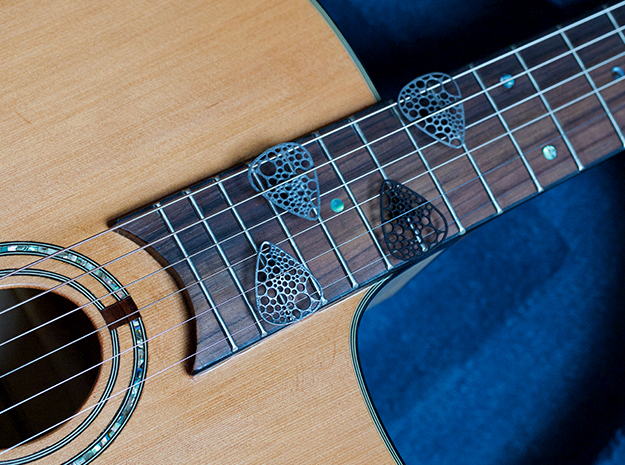
Pick up "Get On Board" by The Wool Hats String Band on Amazon

Get On Board is also available on iTunes, Google Play and Spotify.
VISIT THEIR WEBSITE:
Social Media
